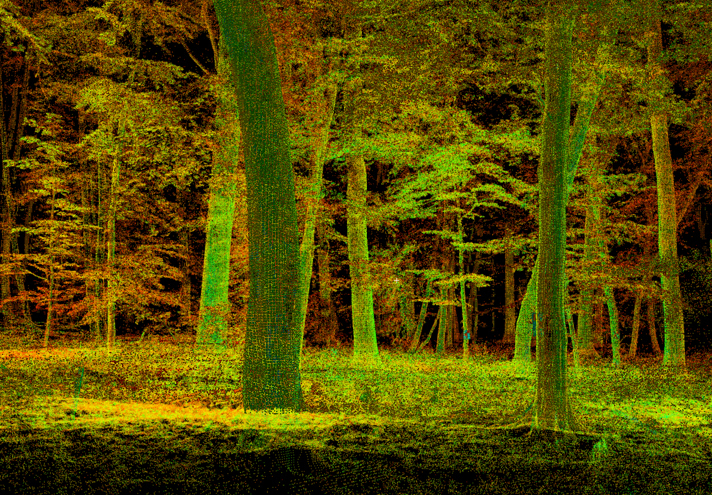Schoodic Institute President & CEO Nicholas Fisichelli part of research team studying the structure of forests around the world
Old forests are of great importance for biodiversity and carbon and water cycling, processes that are influenced by the three-dimensional structure of forests. Schoodic Institute President and CEO Nicholas Fisichelli is part of an international team of researchers, led by the University of Göttingen in Germany, who have investigated the different complex structures that can be found in the world’s forests, as well as the factors that explain this diversity. The results have been published in the journal Nature Communications.

Over the last two years, members of the team traveled to “old-growth” forest areas around the world, including Acadia National Park and The Nature Conservancy’s Big Reed Preserve in Maine, to record the structure of the forests with the help of 3D laser scanners. They found that the global variability of forest structures can be explained to a large extent by the amount of precipitation and thus by the availability of water in the different ecosystems. Changes in precipitation patterns due to climate change will therefore affect the structure of forests.
“The importance of water for the formation of complex forest structures can be explained by various interacting mechanisms,” says Dr. Martin Ehbrecht from the University of Göttingen. “The availability of water is an important driver of the diversity of tree species. The more tree species a forest holds, the more pronounced is the coexistence of different crown shapes and sizes of trees. This means that the space available for the crowns of trees can often be utilised more efficiently in species-rich forests, which makes the forest structure more complex.”
Based on these findings and with the help of climate data, the researchers were able to create maps of the world’s forests showing the global variability of structures that forests can develop when they are left to grow without extensive logging and industrial activity.
Tropical rainforests have a more complex structure than the deciduous and coniferous forests found in temperate zones, which are in turn generally more complex in structure than boreal coniferous forests such as those in Canada and Scandinavia, or subtropical forest savannahs in Africa.
“As the climate continues to change, so will the forests in Maine,” said Fisichelli. “Transition from cold-adapted conifer forests to warm-adapted hardwoods will also mean significant changes in forest structure and thus impacts on carbon, water cycling, biodiversity, and much more.”
Original publication: Martin Ehbrecht et al. Global patterns and climatic controls of forest structural complexity. Nature Communications (2021). Doi: https://doi.org/10.1038/s41467-020-20767-z
